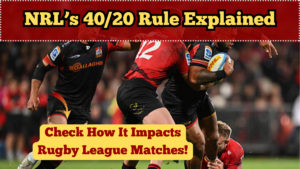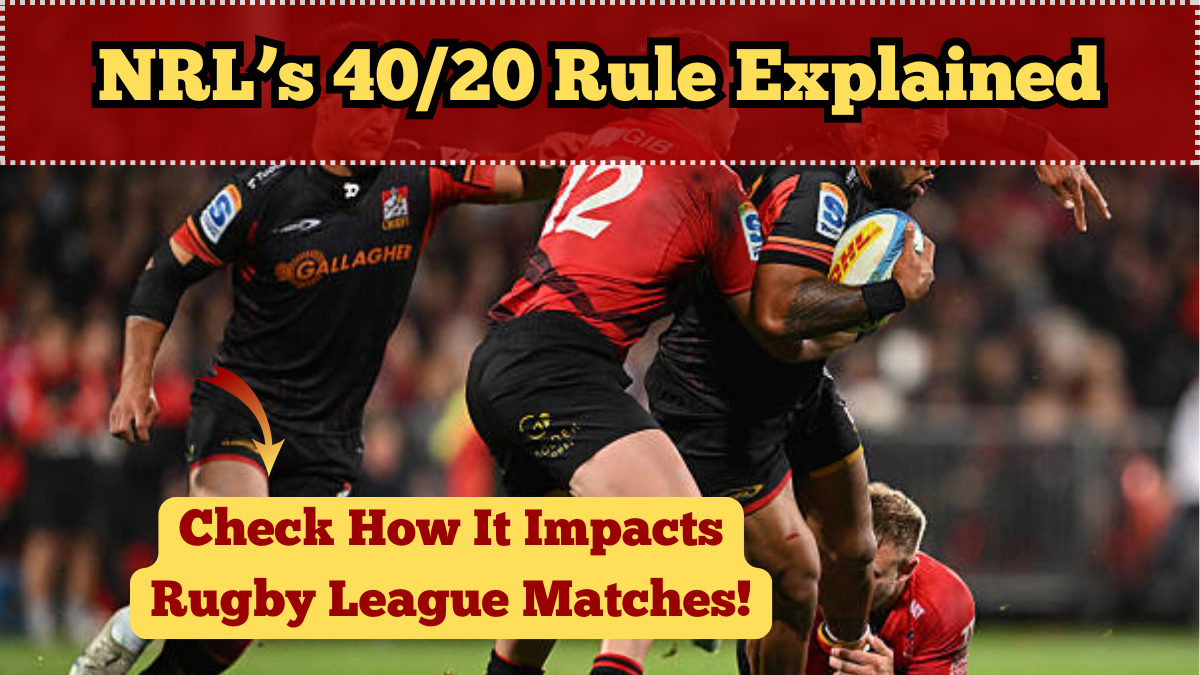The rugby league rules can be overwhelming at first glance, especially for newcomers. But one specific rule—the 40 20 kick—stands out for its ability to completely shift the momentum of a game. Introduced in 1997, this rule remains a critical strategic tool in the nrl game basics and is often the turning point in many rugby league clashes.
If you’re new to the sport or just want to better understand the tactics behind the game, this breakdown of the 40/20 rule will clarify its function, benefits, and influence on match outcomes in 2025.

What is the 40/20 Rule in Rugby League?
The 40/20 kick allows a team to gain a significant advantage if executed correctly. Here’s how it works:
-
A player must kick the ball from behind their own 40-meter line
-
The ball must land inside the field of play and bounce into touch (go out) beyond the opponent’s 20-meter line
-
If successful, the kicking team is awarded the head and feed at the scrum where the ball went out
This provides an opportunity to go from a defensive to an offensive position instantly—a rare and powerful shift under nrl rules.
How the 40/20 Kick Changes Momentum
The 40/20 rule is a weapon in a team’s tactical arsenal. It offers these game-changing benefits:
-
Field Position Advantage: Teams can gain 40+ meters in territory and retain possession
-
Relief Under Pressure: It gives relief from deep defensive zones
-
Shift in Game Flow: Can completely reverse momentum during tight matches
In a sport that emphasizes physicality and positioning, the 40/20 rule gives clever players a strategic edge under the framework of rugby league rules.
Situations Where the 40/20 is Most Effective
This rule is often used:
-
Late in sets, especially on the fifth tackle
-
When pinned deep inside a team’s own half
-
In wet or windy conditions where ball control is tougher
-
To surprise the defense and catch them out of formation
Top teams and experienced players know exactly when to execute the 40 20 kick, making it a signature element in elite gameplay.
Notable Uses of the 40/20 in Recent Seasons
Several memorable matches in 2024 and early 2025 have highlighted the value of the 40 20 kick:
| Match | Player | Result of 40/20 |
|---|---|---|
| Storm vs Panthers (2024) | Cameron Munster | Gained crucial field position, leading to a try |
| Eels vs Broncos (2025) | Mitchell Moses | Broke defensive rhythm, shifted game momentum |
| Roosters vs Rabbitohs (2025) | Luke Keary | Executed perfectly in 78th minute, securing win |
These examples show that mastering this aspect of nrl game basics can determine match outcomes.
Why It’s Essential to Understand in 2025
As rugby league evolves with faster gameplay and smarter strategies, the 40/20 remains a timeless rule. Coaches train players specifically to read defensive gaps and align kicks accurately. Understanding this rule isn’t just for players—fans, too, gain a richer viewing experience when they grasp how such tactical decisions affect the flow of the game.
Whether you’re a fan, analyst, or new viewer, the 40/20 rule is a cornerstone of nrl rules and deserves close attention.
FAQs
What is the 40/20 rule in rugby league?
It allows a team to regain possession if they kick from behind their own 40-meter line and the ball bounces out past the opponent’s 20-meter line.
Does the ball have to bounce for the 40/20 rule to count?
Yes, the ball must bounce at least once in the field of play before crossing the sideline beyond the 20-meter mark.
Can any player attempt a 40/20 kick?
Yes, but it is usually performed by experienced kickers such as the halfback or five-eighth due to the precision needed.
What does the kicking team get if they successfully make a 40/20 kick?
They are awarded the scrum feed at the point where the ball crossed the sideline, giving them full possession in a strong attacking position.
Click here to know more.
Aanchal is a passionate writer with a keen interest in storytelling, content creation, and creative expression. She enjoys exploring diverse topics and crafting engaging narratives that captivate readers.




